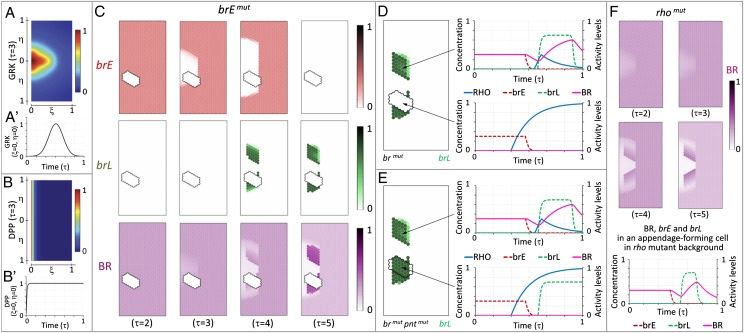Fig. 5.
Mathematical model of the follicular epithelium patterning. (A) Spatial distribution of GRK. (A′) Production of GRK is modeled with a temporal Gaussian distribution, resulting in a dynamic profile. (B) Spatial distribution of DPP. (B′) Influx of DPP from the anterior boundary is constant, producing a constant concentration profile. (C) Dynamics of brE, brL, and BR expression in a clone with inactivated brE spanning the lower appendage primordium. (D) Simulation shows loss of brL in clones where BR production has been inactivated. Dynamics of RHO, BR, brE, and brL expression in a wild-type (Upper), and a clone cell (Lower). (E) Simulation shows no loss of brL in clones where both BR and PNT production have been inactivated. Dynamics of RHO, BR, brE, and brL in a wild-type (Upper), and a clone cell (Lower). (F) Computational modeling of rho-mutant epithelium. Loss of rho can fine-tune the dynamics of brE and brL (compare the temporal pattern with that of the wild type in D), but does not prevent the formation of two domains with high levels of BR expression.

